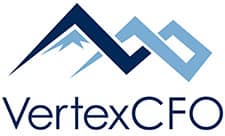Frequently Asked Questions about Financial Management, Planning, Analysis and Reporting
You should track actual results against goals, and review progress regularly to see if you are hitting or missing targets. Consider running multiple scenarios to assess different business conditions. Make your budget comprehensive by including a balance sheet, cash flow, profit and loss, revenue drivers, hiring, costs, and cash flow projections. Your annual budget should have buy-in from senior leadership or operations.
Identify the key financial levers that impact your business and make decisions with long-term stability in mind. Monitor headcount and address underperformance or poor cultural fit quickly. Regularly review your cash reserve models and decide the right reserve target for your business (e.g., 30, 60, 90, or 180+ days of operating cash).
Reinvesting in your business strengthens the balance sheet, helps you retain cash, and gives you the ability to move quickly in a changing environment. This approach supports long-term growth and provides flexibility to pivot and capitalize on opportunities.
Maintain a timely billing system, monitor collections, and coordinate invoice timing. Automating and integrating CRM with accounting can improve efficiency. On the AP side, conserve cash by honoring vendor terms and re-negotiating discounts, rebates, or terms with key suppliers.
A strong relationship with your banker ensures you can renegotiate terms, increase your line of credit, and stay updated on funding opportunities. Review your accounts for FDIC insurance risk and align your cash holdings with your risk profile in partnership with your banker.
Evaluate contracts, leases, and subscriptions to ensure they reflect current needs. Consider downsizing leased space or adjusting commission structures. Review insurance coverage with your broker, and don’t hesitate to switch if you’re not receiving adequate service.
Typically, financial close takes 5–8 business days. You should focus on trends, forecasts, cash needs, and profitability. Finance teams should review reconciliations (bank and credit card) daily or weekly instead of waiting until month-end. Another effective strategy is to move from spreadsheets to using an all-in-one financial reporting system that integrates data from both accounting and payroll systems to improve accuracy. In addition, companies can transition to cloud-based and electronic records to eliminate paper inefficiencies.
Ensure sales compensation and commissions align with your current business strategy. Assess team motivation and evaluate whether your strategy is effective in the current environment. Consider travel budgets, virtual meeting tools, and customer concentration to identify risks and growth opportunities.
Search for a fractional CFO company that supports your culture and values your current team. The outsourced CFO or Controller can mentor your current team and help the financial function become more efficient and valuable to the company, benefiting management and employees alike.
